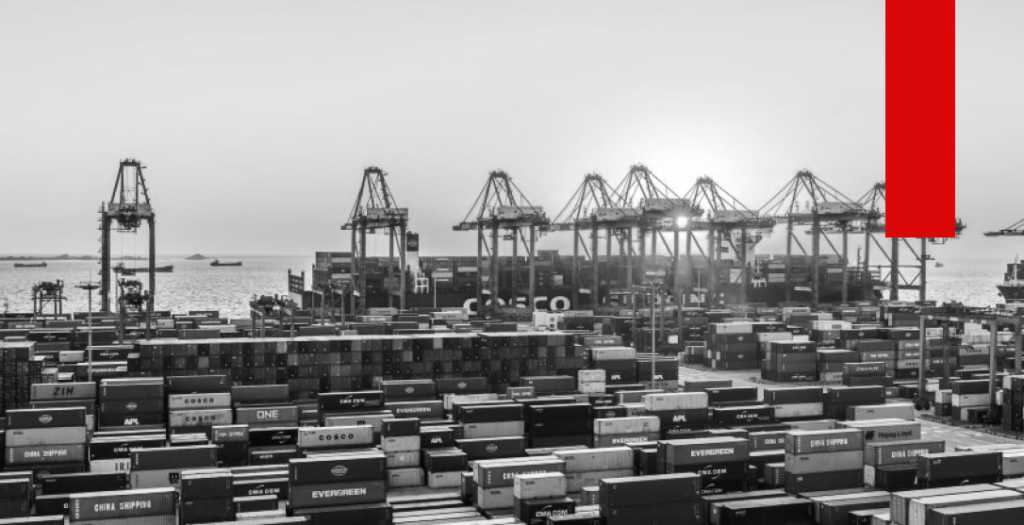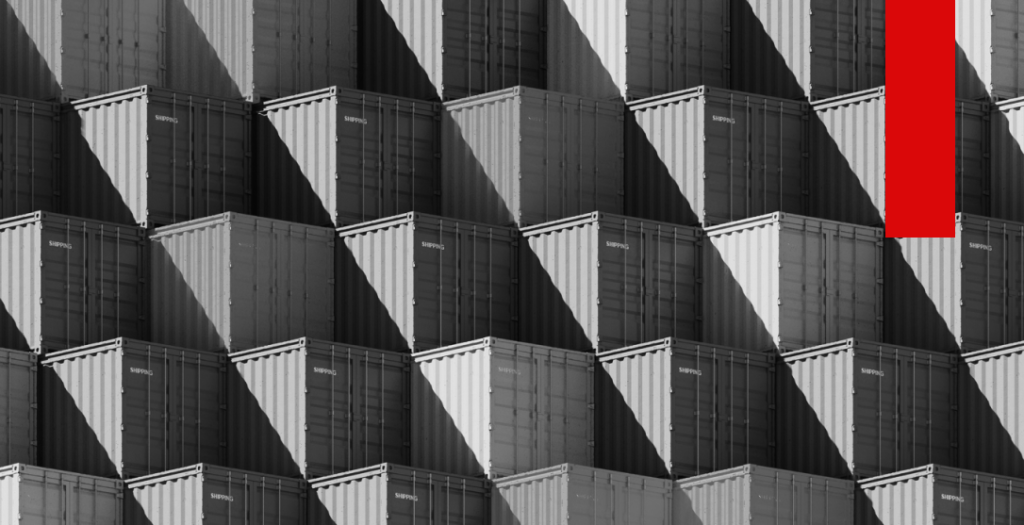What is FCL and LCL transportation?
When you intend to transport goods by sea, the logistics company will give you the opportunity to choose between two delivery methods: FCL or LCL. But what is the key difference between them and which option is more cost-effective? Let's take a closer look at the options for containerized transportation in order to make an informed choice.


Advantages of FCL transportation
When you choose the FCL option for transportation, your goods will be shipped in a standard-sized container (20, 40 or 45 feet) that is completely filled with only your cargo. This method, known as Full Container Load, is ideal for large volumes of goods that take up all the available space in the container. This option is great if you have a significant amount of product that needs to be efficiently transported on a single flight, avoiding the need to split it into multiple shipments.
The use of FCL can be significantly more profitable in terms of cost per cubic meter, and also allows you to organize the preparation, loading and shipment of cargo more quickly.
You can safely choose this option delivery of collective cargo from China to Ukraine, if:
- cargo volume exceeds 20 cubic meters;
- it is necessary to transport the entire batch of goods at the same time, without dividing it into parts;
- quick preparation and dispatch of cargo is required.
If you have a smaller cargo weight, we advise you to choose another method of transportation - LCL delivery.
What are the advantages of LCL transportation?
LCL, or consolidated cargo, becomes an option when goods from different senders are collected together for joint transportation in one container. Container transportation from China is in demand, so choosing a reliable logistics company and transportation method is very important. So, the method known as Less than Container Load is ideal for situations where the volume of goods from one customer is not enough to fill an entire container.
When applying this model, the logistics operator collects different goods from many customers, places them in a common container, and sends them. Upon arrival at the destination, the cargo is distributed among the respective recipients. Choosing a consolidated load (LCL) is recommended when:
- cargo volume is less than 20 cubic meters;
- there is a need to reduce financial costs for a specific period, allowing to distribute the total cost of transportation between several customers.
Also, if you can afford to wait a little longer for the shipment, as consolidated cargo may require more time to organize and deliver.


Differences in FCL and LCL transportation
The fundamental difference between the FCL and LCL shipping methods of sea container transportation is in the way the container space is allocated. When using the LCL option, your goods will be part of a groupage cargo, which means sharing the container space with the products of other exporters. For example, if you are sending a small number of boxes of sports equipment, they can be placed in one container along with electronics from another shipper and textiles from a third. This is in contrast to the FCL option, where the entire container is reserved exclusively for one shipment, allowing you to send, say, a large shipment of furniture that takes up all the available space without having to share that space with others.
FCL & LCL shipping costs
The accumulated experience of our logistics company in the field of international sea transportation of containers and delivery of collective cargo from China to Ukraine allows us to offer customers the most profitable options for their needs. Calculation of the cost of sending a container depends on several important aspects:
- Cargo volume. Often, when sending a large volume of goods, the client can be offered a discount, which makes the tariff more favorable;
- Route length. In general, an increase in the distance of transportation leads to an increase in its cost. However, there is a tendency for the cost per kilometer to decrease as the total length of the route increases;
- Dimensions and weight of cargo. Oversized and heavy cargo significantly affects the increase in the price of transportation and may require the selection of a specialized route;
- Hazard class. Hazardous cargoes affect the increase in transportation costs due to special safety requirements; in such cases, a Material Safety Data Sheet (MSDS) is used to calculate the price.
Seasonal and other surcharges should also be taken into account. Depending on the season and the specific risks that may arise during transportation, various surcharges may be applied to the cost, such as a winter surcharge or surcharges for transportation in war zones.


How to arrange FCL & LCL delivery with Pandas Logistics?
To organize the transportation of cargo in a fully loaded container, we recommend contacting our logistics company Pandas Logistics. The customer establishes an agreement with our specialists on the conditions of storage, transportation and delivery of his goods.
After the formation of the logistics services agreement, our company interacts with the client, undertaking to store and transport the goods in safe conditions. We also provide a number of additional options, including insurance and legal support, to ensure a full range of logistics solutions.
Our advantages
01
WIDE RANGE OF DELIVERIES
02
OUR OWN MODERN FLEET OF VEHICLES AND EXPERIENCED DRIVERS
03
FULL CONTROL FROM LOADING TO DELIVERY OF YOUR SHIPMENT
04
EXTENSIVE NETWORK OF TRANSPORTATION ROUTES
05
STABLE COMMUNICATION WITH CUSTOMERS AND PARTNERS
06
HIGH SAFETY STANDARDS IN FREIGHT TRANSPORTATION
ПОЇЗДКА В КИТАЙ ІЗ СУПРОВІДОМ ФАХІВЦІВ КОМПАНІЇ PANDAS LOGISTICS — ЦЕ ГАРАНТІЯ 100% УСПІХУ ВАШОГО БІЗНЕС-ПОДОРОЖІ.
WAITING FOR APPLICATIONS!

